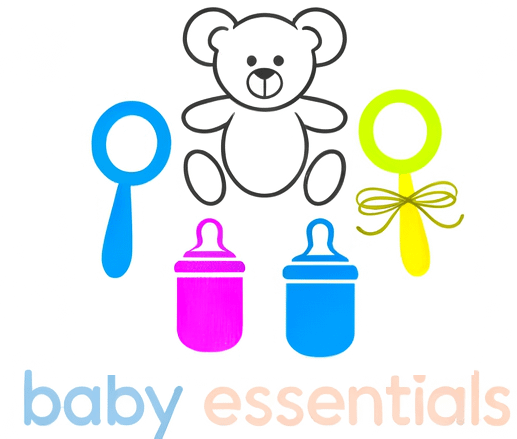Welcoming a new baby is a time of joy, wonder, and understandably, a fair bit of anxiety, especially when it comes to feeding. Whether you’re breastfeeding, formula feeding, or doing a bit of both, one of the most common concerns for new and expecting parents is: “How do I know my baby is getting enough milk?” This guide provides clear, medically sound advice, practical tips, and gentle reassurance on the signs your baby is getting enough milk, so you can feel confident nourishing your little one.
Understanding Your Baby’s Needs
Every baby is unique, but all need adequate nutrition to grow and thrive. In the early days, it’s natural to worry about milk intake, especially since you can’t see how much a breastfed baby is drinking. Fortunately, there are reliable physical, behavioural, and developmental signs that show your baby is feeding well, whether you’re breastfeeding or formula feeding.
Understanding the signs your baby is getting enough milk is crucial for new parents to ensure their baby’s health and wellbeing.
Physical Signs Your Baby is Getting Enough Milk
Wet and Dirty Diapers
- Wet Diapers: In the first 48 hours, expect 2–3 wet nappies. From day 5 onwards, your baby should have at least 6 heavy, wet nappies every 24 hours. Wet nappies should be soaked with clear to pale yellow urine. Fewer nappies may indicate dehydration or insufficient milk intake.
- Dirty Diapers: By day 4, expect at least 2 soft, yellow poos the size of a £2 coin daily. By day 5, stools should be yellow and loose. Formula-fed babies may have firmer, less frequent stools.
Steady Weight Gain
- It’s normal for babies to lose some birth weight in the first 2 weeks. After that, a healthy baby should gain weight steadily. Typical weight gain is about 155–240 grams (5.5–8.5 ounces) per week until four months of age.
- Your health visitor or doctor will monitor your baby’s weight at regular check-ups. If your baby is not regaining birth weight by 2 weeks or is not gaining steadily, seek advice.
Physical Appearance and Alertness
- Babies who are getting enough milk look healthy and are alert when awake. Their skin is supple, and their eyes are bright.
- They have a moist mouth and good skin tone. A dry mouth, sunken eyes, or lethargy can be warning signs of dehydration or underfeeding.
Feeding Patterns
- Breastfed babies: Typically feed 8–12 times in 24 hours. Feeds start with rapid sucks, followed by slower, rhythmic sucking and swallowing. You should see and hear your baby swallowing, and their cheeks should stay rounded, not hollow.
- Formula-fed babies: Feed on demand, usually every 3–4 hours, but patterns can vary. Let your baby set the pace and don’t force them to finish a bottle. Typical intake is 150–200ml of formula per kilogram of body weight per day.
Contentment After Feeds
- After feeding, a well-fed baby is calm, content, and may fall asleep. They often release the breast or bottle on their own and have relaxed hands and arms.
- If your baby is still hungry, they may root, suck their hands, or show other hunger cues soon after a feed.
Breast Changes (for Breastfeeding Parents)
- Your breasts should feel softer after feeds, and you should not experience pain. Nipples should look the same as before feeding, not pinched, white, or flattened.
- Some mothers feel sleepy or relaxed after breastfeeding due to the release of hormones.
Developmental Signs of Good Feeding
- Consistent weight gain and growth in length and head circumference are key developmental signs.
- Babies who are feeding well reach their developmental milestones, are alert, and interact with their environment.
Breastfeeding: Specific Signs and Tips
Signs of Good Attachment and Milk Transfer
- Baby has a wide-open mouth and a large mouthful of breast.
- Chin touches the breast, lower lip is rolled down, and nose is free.
- You feel no pain (though the first few sucks may be strong).
- Baby feeds with rhythmic sucks and swallows, with occasional pauses.
- Baby comes off the breast on their own and appears satisfied.
- Breasts feel softer after feeds.
- Baby’s mouth is moist after feeds.
- Baby is content and alert when awake.
Boosting Milk Supply
- Feed on demand, offer the breast whenever your baby shows hunger cues.
- Offer both breasts at each feed, alternating which one you start with.
- Keep your baby close, use skin-to-skin contact, and avoid unnecessary bottles or dummies until breastfeeding is well established.
- If concerned, seek help from a midwife, health visitor, or lactation consultant.
Formula Feeding: Specific Signs and Tips
How Much Formula Does My Baby Need?
- Babies typically need 150–200ml of formula per kilogram of body weight per day. For a 3kg baby, that’s about 450–600ml in 24 hours.
- Let your baby guide you, feed when they show hunger cues and stop when they’re satisfied.
- Don’t force your baby to finish a bottle. Discard any leftover milk to prevent infection.
- Wet and dirty nappies, steady weight gain, and contentment are the best indicators your baby is getting enough.
Common Formula Feeding Questions
- Spitting up: Occasional posseting is normal. If your baby is frequently sick, in pain, or not gaining weight, seek advice.
- Constipation: Always follow the formula instructions. Too much powder can cause constipation and dehydration.
- Allergies: If you suspect an allergy or intolerance, consult your GP before switching formulas.
Sources: NHS
When to Seek Medical Help or Lactation Support
Warning Signs Your Baby May Not Be Getting Enough Milk
- Fewer than 6 wet nappies per day after day 5.
- Dark urine, dry mouth, sunken eyes, or lethargy.
- Little or no weight gain after the first two weeks, or ongoing weight loss.
- Persistent crying, irritability, or seeming unsatisfied after most feeds.
- Difficulty latching, painful feeds, or nipple damage.
- Very long or very short feeds (under 10 minutes or over an hour) with little swallowing.
- Unusual stool patterns, no poo for several days in a newborn, or hard, dry stools.
- Signs of illness: fever, persistent vomiting, green vomit, drowsiness, or confusion.
When to Call a Doctor or Health Professional
- The baby is under 8 weeks and refusing to feed.
- Shows signs of dehydration or is not producing enough wet nappies.
- Has a fever (over 38°C/101°F if under 3 months, over 39°C/102°F if 3–6 months).
- Is persistently unwell, has green vomit, or is very sleepy and hard to rouse.
- You are worried or feel something isn’t right — trust your instincts.
Seeking Lactation or Feeding Support
- Contact your midwife, health visitor, or a certified lactation consultant for help with breastfeeding.
- Many organisations (NHS, La Leche League, NCT) offer helplines and support groups for feeding concerns.
- Don’t hesitate to ask for help; feeding challenges are common and support is available.
Tips for Anxious or First-Time Parents
Trust Your Baby and Yourself
- Babies are born with instincts to feed and will show you when they’re hungry or full. Watch for cues and let your baby guide you.
- Feeding is a learning process for both you and your baby. It’s normal to need time to feel confident.
Build a Support Network
- Connect with other parents, join local or online support groups, and talk with health professionals. Sharing experiences can be reassuring and helpful.
- Don’t compare yourself or your baby to others. Every baby is different.
Take Care of Your Mental Health
- It’s common to feel anxious or overwhelmed, especially in the early days. If you’re struggling, reach out to your GP, health visitor, or a mental health professional.
- Remember, you’re not alone. Many parents share these worries, and support is available.
Practical Tips for Feeding Success
- Feed in a calm, comfortable environment.
- Hold your baby skin-to-skin to encourage feeding cues and bonding.
- Keep track of wet and dirty nappies, especially in the first weeks.
- Attend regular health checks to monitor your baby’s growth.
- If something doesn’t feel right, ask for help early. Small adjustments can make a big difference.
Conclusion: Reassurance for Your Feeding Journey
Worrying about your baby’s milk intake is a sign of how much you care. By watching for the physical, behavioural, and developmental signs described above, you can be confident your baby is getting the nourishment they need. Remember, every baby is unique, and feeding is a journey for both of you. If you have concerns or need support, reach out help is always available. You’re doing a wonderful job, and with time, feeding will become a natural and joyful part of your parenting experience.
For more support: Contact your health visitor, GP, or organisations like the NHS, La Leche League, or NCT for advice and reassurance.

